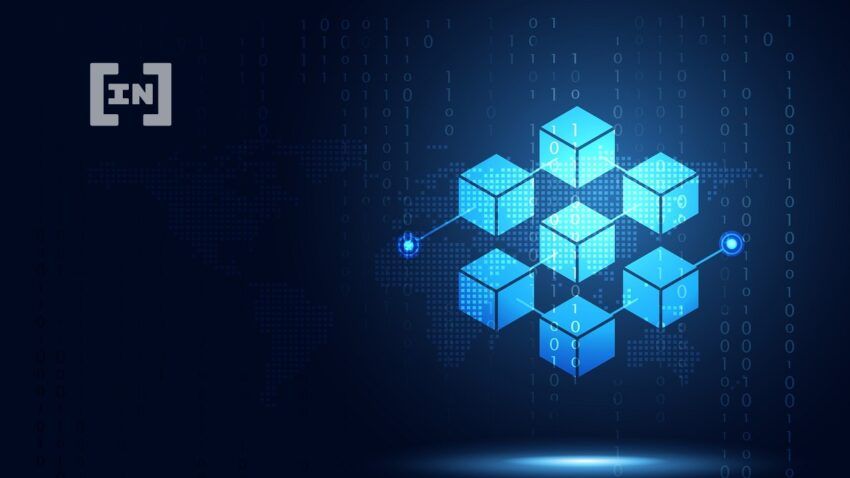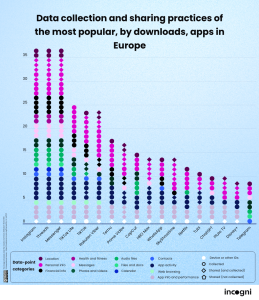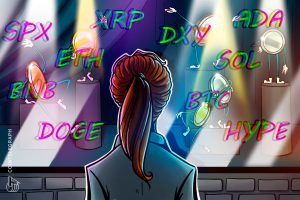Metaverse Will be Mind-blowing. Here’s How we Get There

The metaverse will require a true “multichain” to unlock its full potential says Matthew Niemerg, Ph.D., of Aleph Zero Foundation.
There’s been a lot of talk about Web3 and the metaverse lately, and despite Mark Zuckerberg’s centralized designs for the emergent Metaverse, even Goldman Sachs admits that it will need to run on blockchain. However, right now Ethereum – the largest single network for hosting web3 services – is too slow and expensive to support a wider audience – at least until The Merge occurs. Even though there are plenty of other networks to choose from, there currently isn’t one clear infrastructure that unites the various promising services being developed. Existing blockchains are often islands unto themselves, or require clunky, centralized means of transferring value.
In order to unlock the vision of what the future internet could be, these islands need to become efficient and interconnected. By utilizing new technologies such as sidechains, parachains and bridges, developers have a means to build a “multichain” ecosystem – one where all networks enjoy vastly improved speeds as well as the ability to frictionlessly interact with each other. Fortunately, this process is already underway as it is essential to bring about the metaverse that tomorrow’s users can benefit from.
What’s holding back Web3
Ethereum and its siblings are designed to act as global computers, able to facilitate decentralized applications (dApps) and bring trustless and uncensorable services to anyone with an internet connection. This is a key element of web3 and will form the basis for the Metaverse, the evolving interconnected ecosystem of virtual worlds and platforms. In the Metaverse, value and information can be shared across all services, and blockchains like Ethereum will make this possible.
However, there are currently some problems. For one, most existing networks aren’t able to provide the level of speed, throughput, and cost efficiency to support global adoption. This is due to what is known as the “scalability trilemma.” In essence, this describes the balance that blockchains have between security, decentralization and scalability. If a network is secure and decentralized, like Bitcoin and Ethereum, it is hard to scale; if it is scalable and secure, it will usually suffer from centralization.
Then, there’s the issue of interoperability. Blockchains are self-contained; they generally aren’t designed for communication with other execution layers. Hence, many of the developed dApps are effectively siloed and most are not built, at least in initial versions, with a multichain design. This limits the liquidity and functionality of most web3 offerings, meaning many users end up choosing one or two ecosystems, at most.
Enter the multichain
Multichains can pick up what incumbent blockchains have started. In essence, a multichain is a series of services that connect multiple decentralized networks together, allowing for fluid interaction between services and also providing means for greater throughput and scaling. Each chain maintains its own security; in addition, the underlying consensus protocol may differ from chain to chain.
Already, many projects have implemented sovereign chains with their own independent security, such as Solana and Polygon. The point is not to compete with other chains but to integrate their services. To make this possible, a multichain design connects disparate and sovereign chains with a cross-chain communication protocol.
Another component of the multichain world is separate execution layer environments; these execution layers are considered one type of scalable layer 2 solutions. These execution layers act with their own smart contract language and connect to a settlement layer and can be viewed as sitting “on top” of the underlying network from which they inherit, or share, their security (hence the term “shared security”). They interface with the network and can take much of the traffic off of the main chain in order to execute the state transitions separately. To further enhance their utility, these execution layers can be used at the same time, opening up the possibility for broader scaling of any decentralized network.

Zero-knowledge proofs
Under the shared security paradigm, the security of the execution environment is not sacrificed and utilizes cryptographic primitives known as “zero-knowledge proofs,” or ZKPs. ZKPs allow for a blockchain’s transactions to be verified off-chain and a proof of the transaction validity is sent back to the main chain. Combined with data availability techniques and so-called “fraud proofs”, by supplying a cryptographic proof that these transactions are valid, ZKPs eliminate the need for additional transaction data to be sent back to the main chain. This frees up space and extends throughput of the underlying chain.
Bridges, on the other hand, are mechanisms that allow two separate blockchains to speak to each other, a feature most platforms do not do natively. Bridges also let chains retain their individual protocol and consensus mechanisms while still being able to transfer assets and information accurately and securely. Separate execution environments can themselves act as bridges, if they are designed to interface with multiple networks, or they can be specific dAPP services or a collection of services.
Metaverse and multichain environments
When a combination of execution layers and bridges are used together, a “multichain” environment is created. One project that is already heavily utilizing this model is Polkadot. A self-described “blockchain of blockchains,” Polkadot has built an ecosystem that uses Polkadot as a primary relay chain that allows for the deployment of many execution layers, or parachains in the parlance of the Substrate ecosystem, which are in turn designed for specific tasks or applications.
Instead of forcing one or two blockchains to process everything, these parachains handle their own throughput while being able to transfer data seamlessly to the Polkadot relay chain, to other parachains, or even to other independent chains via direct bridges. Developers have far more flexibility in how they deploy their smart contracts, choosing a parachain or execution environment as they see fit but still while still inheriting the security of their specific application from the Polkadot base layer.
As touched on, Polkadot’s parachains can also act as bridges to existing networks like Bitcoin and Ethereum. Now, a whole new world of liquidity and communication is possible. Users will be able to interact with virtually any web3 service via a single point of entry, with excellent latency, all while maintaining the security that they have come to expect from a blockchain solution.
Metaverse: Unlocking the potential
The possibilities for what multichains could mean for tomorrow’s internet are countless. Take gaming as an example. Future virtual worlds could tap into the array of blockchain services that will become available. They won’t need to be built directly on top of several networks, which would be fairly complicated, they would just need the right APIs and bridges to access whichever networks they need or desire. The promise that in-game NFTs could be transferred to any platform or sold in any market could be realized without friction, putting more control into users’ hands than they have ever had before.
Financial services in web3 also stand to be more seamless and empowering. Building off of what the cryptocurrency markets and DeFi have already built, a wide array of assets could be accessed and traded across any platform, while retaining the security and immutability of their native blockchains. They could even be integrated with the aforementioned virtual worlds as well as social networks to enable users to utilize their finances wherever they are in the metaverse.
Truly, the opportunities are almost endless, and it will be up to future developers to discover new ways to leverage this technology and evolve the web3 experience. While great work is being done, it will take time for most networks to integrate efficiently. Nonetheless, it is essential that they do, as anything less could lead to a fragmented, siloed web3 that fails to open up the vision that so many currently have for tomorrow’s internet. New techniques may emerge, but currently, it looks like the future of digital communication and finance is a multichain world.
About the author

Matthew Niemerg, Ph.D., is the co-founder and president of Aleph Zero Foundation – a Swiss non-profit offering a new infrastructure layer with a scalable plug-and-play privacy solution leveraging zero-knowledge proofs (zk-SNARKs) and Secure Multiparty Computation (sMPC). Mathew is also a Ph.D. in Mathematics in the area of numerical algebraic geometry, a Simons-Berkeley Fellow, and an IBM Center of Excellence Fellow in High-Performance Computing.
Got something to say about the metaverse, a multichain future, or anything else? Write to us or join the discussion in our Telegram channel. You can also catch us on Tik Tok, Facebook, or Twitter.
Disclaimer
All the information contained on our website is published in good faith and for general information purposes only. Any action the reader takes upon the information found on our website is strictly at their own risk.













